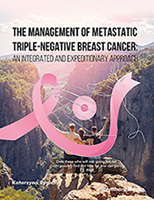Multiple Myeloma (MM), the second most common blood cancer in adults, is a clonal plasma cell malignancy within the bone marrow characterized by osteolytic bone lesions, renal disease, and immunodeficiency. The development of MM is a complex multi-step process involving both early and late genetic changes in the tumor cell as well as selective supportive conditions by the bone marrow (BM) microenvironment. It is now well established that MM cell-induced disruption of the bone marrow homeostasis between the highly organized cellular and extracellular compartments supports MM cell proliferation, survival, migration, and drug resistance via activation of various signaling (e.g. PI3K/Akt, JAK/ Stat-, Raf/MEK/MAPK-, NFκB-, and Wnt-) pathways. Based on this knowledge prototypic drugs thalidomide, bortezomib, and lenalidomide, which target both MM cells and the BM microenvironment have already fundamentally changed treatment options of this disease. Indeed, their benefit is now not only shown in relapsed and refractory disease but they also improve overall response, duration of response, and progression-free and overall survival when used as part of first-line regimens. However, despite these new insights into MM pathogenesis and exciting derived therapeutic advances, MM still remains incurable. Ongoing studies are therefore aiming to further delineate mechanisms of MM pathogenesis within the bone marrow to identify novel agents with enhanced cytotoxicity and decreased drug resistance to improve patient outcome.
We are very happy having been able to win eminent physician/ scientists to write the chapters of this e-Book which aims to provide readers with a comprehensive account of the most recent developments in the field of MM; a field which we believe represents a paradigm for translational research in general. Our foremost goal was to address a broad audience of readers including clinicians, scientists, students, and interested patients.
After a brief historic review by Drs. Kyle and Steensma, Section 1 will cover newest insights into the epidemiology and etiology of MM (Drs. Birmann and colleagues), as well as attempts to generate a genetically based classification system (Dr. Tonon).
In Section 2, Dr. Podar and colleagues will first give a brief overview of up-to-date treatment strategies both for upfront therapy as well as for therapy of relapsed/ refractory MM. Dr. Harousseau will then specifically focus on the changing role of autologous and allogeneic stem cell transplantation as part of new treatment regimens. Drs Vallet and Raje will review the pathophysiology and treatment options of MM bone disease thereby identifying potential therapeutic alternatives to bisphosphonates. Dr. Lentzsch will then discuss the management of complications in MM and supportive treatment regimens. Finally, Dr. Kumar will summarize promising advanced clinical trials, which are likely to change once more MM treatment regimens in near future. Taken together, Section 2 aims to address the needs of clinicians who are looking for the rationale of up-to-date treatment guidelines in the day-to-day practice.
In Section 3 exciting new preclinical results will be discussed. Chapters of this section will delineate the pathophysiologic key role of the BM microenvironment in MM (Dr. Roccaro and colleagues), and the role of MM BM angiogenesis (Drs. Ribatti and Vacca), in particular. Moreover, Drs. Fulciniti and colleagues will discuss MM mouse models, their advantages and pitfalls in translational MM research.
Based on mechanistic data presented in Section 3, Section 4 will finally summarize potential new therapeutic targets and derived new treatment strategies with focus on small molecules (Drs. Podar and colleagues), as well as antibodies (Dr. Tai).
Sections 3 and 4 aim to predominantly address the interests of scientists and clinical investigators in the MM field. However, we hope and believe that our own and other studies of the pathophysiologic role of the tumor microenvironment, the identification of novel therapeutic targets, and the clinical introduction of derived agents in MM also may serve as a paradigm for translational research in other fields of oncology.
Klaus Podar
National Center of Tumor Diseases (NCT), University of Heidelberg and
German Cancer Research Center (DKFZ), Germany;
Dana-Farber Cancer Institute (DFCI),
Harvard Medical School, USA
Kenneth C. Anderson
Dana-Farber Cancer Institute (DFCI),
Harvard Medical School,
USA





